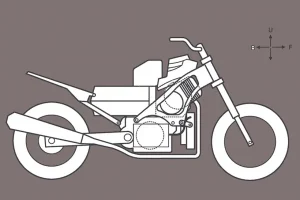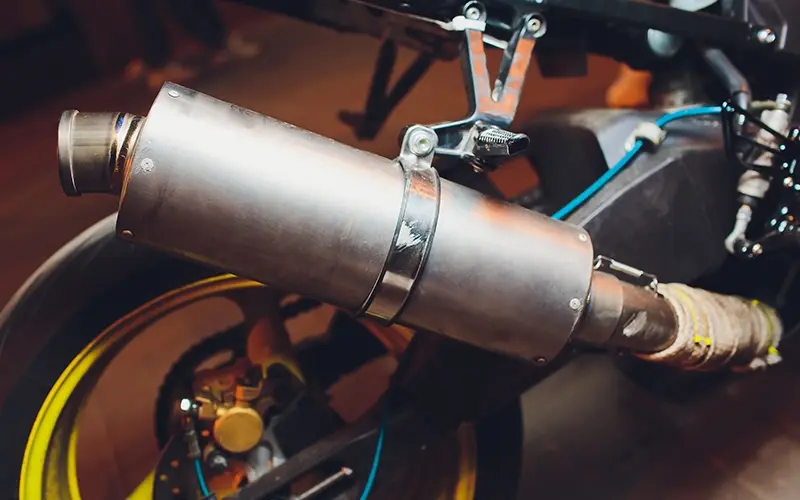Yamaha design has a petrol motor to extend the electric battery range.
Hybrid cars are quickly becoming the standard as a stepping stone to complete electric power, and there’s growing speculation that bicycles will follow suit.
In 2030, it will be unlawful to sell new cars in the UK that are solely powered by fossil fuels, with combustion-engined vehicles being phased out five years later. Even if no particular regulation is passed, the pressure on bikes to follow suit will only grow as the deadline approaches.
Kawasaki has already committed to a quick expansion of their battery-powered lineup, with plans to introduce a significant number of hybrid and pure-electric models, while Yamaha now appears to be revisiting the concept of hybrid motorcycles.
In this field, Yamaha was a pioneer. It debuted two hybrid-powered designs in 2005: the Gen-Ryu, which paired an R6 engine with an electric motor in a low-slung tourer, and the HV-01, which was a more conventional scooter.
In 2007, Yamaha introduced the Luxair hybrid idea, and in 2009, the HV-X showcased a near-production hybrid system in a maxi-scooter, combining a 250cc single and a 20hp electric motor — just as the global financial crisis slashed R&D resources. The company’s enthusiasm for the concept has resurfaced.
The old Yamahas were parallel hybrids, with the gasoline engine and electric motor operating the rear wheel separately or in tandem.
Yamaha’s new designs, on the other hand, have a hybrid drive system with a small petrol engine acting as a range-extender generator to recharge the batteries.
In 2020, a patent for such a bike was issued, and now new documents revealing three hybrid designs have been released.
The smallest is a 125cc scooter with a low-mounted petrol engine/generator, a battery under the seat, and an electric motor in the swingarm. The petrol-powered generator component is bolted to elastic mounts so vibrations don’t reach the frame or rider because it doesn’t need to move the back wheel.
The single-cylinder engines lack the power and torque to provide usable performance on their own, but they can trickle-charge the battery by running at their most efficient RPMs.
Warm combustion engines are more efficient; cool electric engines are more efficient. Yamaha’s designs demonstrate a variety of radiator configurations that might be used to attain this purpose.
The following concept is a maxi-scooter with a TMAX-style chassis, with the petrol engine and generator situated forward of the electric motor between the rider’s legs and a traditional chain or belt drive to the rear wheel.
Finally, there’s a motorcycle with a small petrol engine mounted high up, just below the steering head, and a big electric powertrain filling the space where the engine and transmission would typically be.
The single-cylinder engines lack the power and torque to provide usable performance on their own, but they can trickle-charge the battery by running at their most efficient RPMs.
Warm combustion engines are more efficient; cool electric engines are more efficient. Yamaha’s designs demonstrate a variety of radiator configurations that might be used to attain this purpose.
The following concept is a maxi-scooter with a TMAX-style chassis, with the petrol engine and generator situated forward of the electric motor between the rider’s legs and a traditional chain or belt drive to the rear wheel.
Finally, there’s a motorcycle with a small petrol engine mounted high up, just below the steering head, and a big electric powertrain filling the space where the engine and transmission would typically be.












